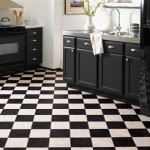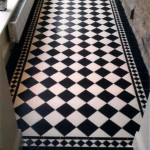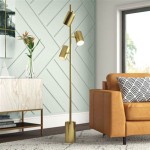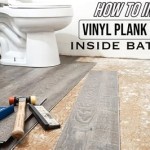Best Engineered Wood Flooring: A Consumer Report Guide
Engineered wood flooring has become a prominent choice for homeowners seeking the aesthetics of hardwood without the associated drawbacks and higher costs. Unlike solid hardwood, engineered wood flooring is constructed from multiple layers of wood veneer bonded together, offering increased stability and resistance to moisture and temperature fluctuations. This layered construction makes it suitable for installation in areas where solid hardwood might not be ideal, such as basements and over concrete slabs. This consumer report guide aims to provide a comprehensive overview of engineered wood flooring, with a focus on factors to consider when selecting the best option for individual needs and preferences, mirroring the rigorous testing and evaluation methodologies employed by consumer reporting agencies.
The market for engineered wood flooring is vast, with a diverse range of species, finishes, thicknesses, and construction methods. Navigating this landscape requires a thorough understanding of the key attributes that contribute to the quality, durability, and overall performance of the flooring. Understanding these attributes will empower consumers to make informed decisions that align with their budget and functional requirements.
Understanding Engineered Wood Flooring Construction
The core construction of engineered wood flooring is a critical factor influencing its stability and resistance to environmental changes. The core typically consists of multiple layers of plywood, high-density fiberboard (HDF), or softwood. Plywood cores generally offer superior stability and moisture resistance compared to HDF cores, making them a preferred choice for areas with moderate humidity levels. Softwood cores offer a middle ground, often treated for enhanced moisture resistance. The thickness and number of core layers also contribute to the flooring's overall stability. A thicker core with more layers generally provides greater resistance to warping and cupping. Consumers should inquire about the core material and construction details when evaluating different engineered wood flooring options.
The top layer, also known as the wear layer, is the visible surface of the flooring and is made of real hardwood. The thickness of the wear layer significantly impacts the flooring's lifespan and its ability to be refinished. Thicker wear layers, typically 2mm or greater, can withstand multiple sandings and refinishing, extending the flooring's lifespan considerably. Thinner wear layers, while more affordable, offer limited refinishing potential and are better suited for areas with lighter foot traffic. The species of wood used for the wear layer also influences its durability and resistance to dents and scratches. Harder wood species, such as oak, maple, and hickory, are more resistant to wear and tear compared to softer species, such as pine or birch.
The backing layer, located on the underside of the flooring, provides additional stability and serves as a barrier against moisture infiltration from the subfloor. The backing material is typically a thin layer of wood veneer or a synthetic material. A well-constructed backing layer contributes to the overall dimensional stability of the flooring and helps prevent warping or buckling.
Evaluating Durability and Wear Resistance
The durability of engineered wood flooring is directly related to its ability to withstand everyday wear and tear, including scratches, dents, and fading. Several factors contribute to the flooring's durability, including the hardness of the wood species used for the wear layer, the thickness of the wear layer, and the type of finish applied to the surface. The Janka hardness scale is a commonly used measure to assess the hardness of different wood species. Higher Janka ratings indicate greater resistance to dents and scratches. For high-traffic areas, selecting engineered wood flooring with a harder wood species and a thicker wear layer is recommended.
The finish applied to the surface of the engineered wood flooring plays a crucial role in protecting the wood from moisture, scratches, and stains. Common finish types include polyurethane, aluminum oxide, and oil-based finishes. Polyurethane finishes are durable and water-resistant, making them a popular choice for residential applications. Aluminum oxide finishes are exceptionally durable and scratch-resistant, making them suitable for high-traffic areas and commercial settings. Oil-based finishes penetrate the wood and provide a natural look and feel, but they typically require more maintenance than polyurethane or aluminum oxide finishes. Consumers should inquire about the type of finish applied to the flooring and its maintenance requirements.
Resistance to fading is another important consideration, particularly in areas exposed to direct sunlight. Prolonged exposure to sunlight can cause the wood to fade or discolor over time. Engineered wood flooring with UV-resistant finishes can help mitigate this effect. Consumers should look for flooring products labeled as UV-resistant or with specific information about their resistance to fading.
Beyond the specific finish, considering the texture of the flooring can also impact perceived wear and tear. Flooring with a hand-scraped or wire-brushed texture can better conceal minor scratches and dents, making it a practical choice for households with children or pets. Smooth-surfaced flooring, while aesthetically pleasing, may show scratches more readily.
Installation Considerations and Cost Factors
The installation method for engineered wood flooring can significantly affect its performance and longevity. Common installation methods include gluing, nailing, stapling, and floating. Gluing down the flooring provides a stable and secure installation, but it can be more challenging and time-consuming than other methods. Nailing or stapling is typically used for engineered wood flooring installed over wood subfloors. Floating installations, where the flooring is not directly attached to the subfloor, are a popular option for DIY projects and can be installed over various subfloor types. The choice of installation method depends on the subfloor type, the flooring product's specifications, and the installer's skill level.
Professional installation is generally recommended to ensure proper adherence to manufacturer instructions and to avoid common installation errors that can lead to problems such as buckling, gapping, or squeaking. The cost of installation can vary depending on the installation method, the complexity of the project, and the geographic location. Obtaining quotes from multiple professional installers is advisable to compare prices and services.
The cost of engineered wood flooring itself varies widely depending on the wood species, the thickness of the wear layer, the core construction, and the finish. Exotic wood species and flooring with thicker wear layers tend to be more expensive. While budget is a key consideration, focusing solely on the lowest price point can lead to compromises in quality and durability. Considering the long-term cost of ownership, including the potential for refinishing and the flooring's lifespan, is essential when evaluating different options.
Beyond the material and installation costs, ongoing maintenance expenses should also be factored into the overall cost of ownership. Regularly cleaning and maintaining the flooring according to the manufacturer's instructions is crucial to preserving its appearance and extending its lifespan. Certain finishes may require periodic reapplication of protective coatings or oils. Understanding the maintenance requirements and associated costs is essential for informed decision-making.
Furthermore, when calculating costs, consider the need for transitions between different flooring types in adjacent rooms. These transition pieces, while seemingly minor, can add to the overall expense and should be factored into the initial budget.
In summary, selecting the best engineered wood flooring involves careful consideration of the core construction, wear layer thickness, finish type, installation method, and overall cost. By understanding these factors and considering individual needs and preferences, consumers can make informed decisions that result in beautiful, durable, and long-lasting flooring.

Best Engineered Wood Flooring Of 2024 Elevate Your Home

Engineered Hardwood Flooring Reviews Best One To Buy

Home Decorators Collection Nobelford Oak 56807 Flooring Review Consumer Reports

The Best Engineered Hardwood For Kitchens A Complete Guide 50 Floor
Best Flooring Reviews Consumer Reports

The Best Engineered Hardwood For Kitchens A Complete Guide 50 Floor

10 Major Disadvantages Of Engineered Wood Flooring An Hardwood Floors Guide Reallycheapfloors America S Cheapest

Hardwood Flooring That S Better Than Lvp Flooret Silvan Resilient

Hardwood Floors Gain Bolder Design Technical Advancements In 2024 Floor Trends Installation

Solid Hardwood Flooring Vs Engineered Honest Review







